There are many woodworking axe types, as you will find out from your local store. But the headache is in choosing the best one for a particular job. So what are some of their respective functions? Let’s explore.
13 Best Woodworking Axe Types
Felling Axe
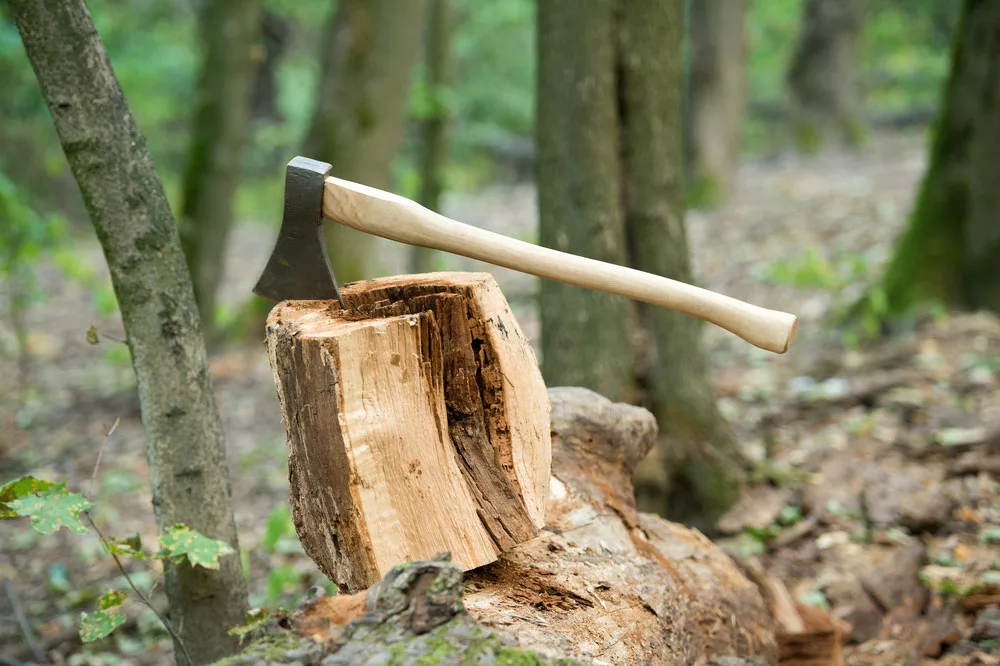
An Axe on a Tree Stump
It is the best woodworking axe for felling trees in the forest or chopping large logs into small bits. The handle is often longer than typical axes to improve grip and to cut impact in most felling axes.
Besides, the axe head has a characteristic wide angle and is also quite weighty (2 to 4 lbs) than the average axe. It enhances powerful swinging and also delivers a high torque when cutting.
Lastly, most handmade felling axes have hardwood, such as a hickory wood handle.
Forest Axe
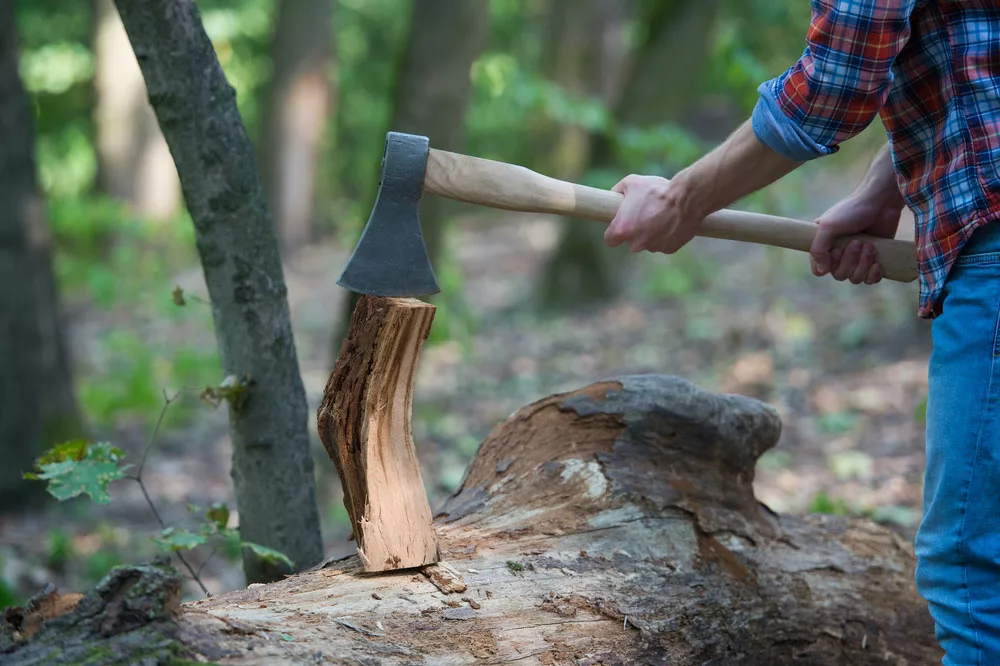
Hands of Lumberjack with Axe
It is similar to the felling axe, but this woodworking axe is more suitable for many tree felling operations. You can use it to cut down all sorts of forest vegetation, from small shrubs to large trees.
The forest axe also ranks as a top woodworking axe thanks to its excellent capability to cut wood across the grain. Also, it’s pretty heavy, so you may struggle to carry it all over. But you can store it in a cabin in the forest as you don’t necessarily have to bring it home.
Again, its handle is long, and its head is heavy like the felling axe to generate enough thrust for cutting trees.
Hudson Bay Axe
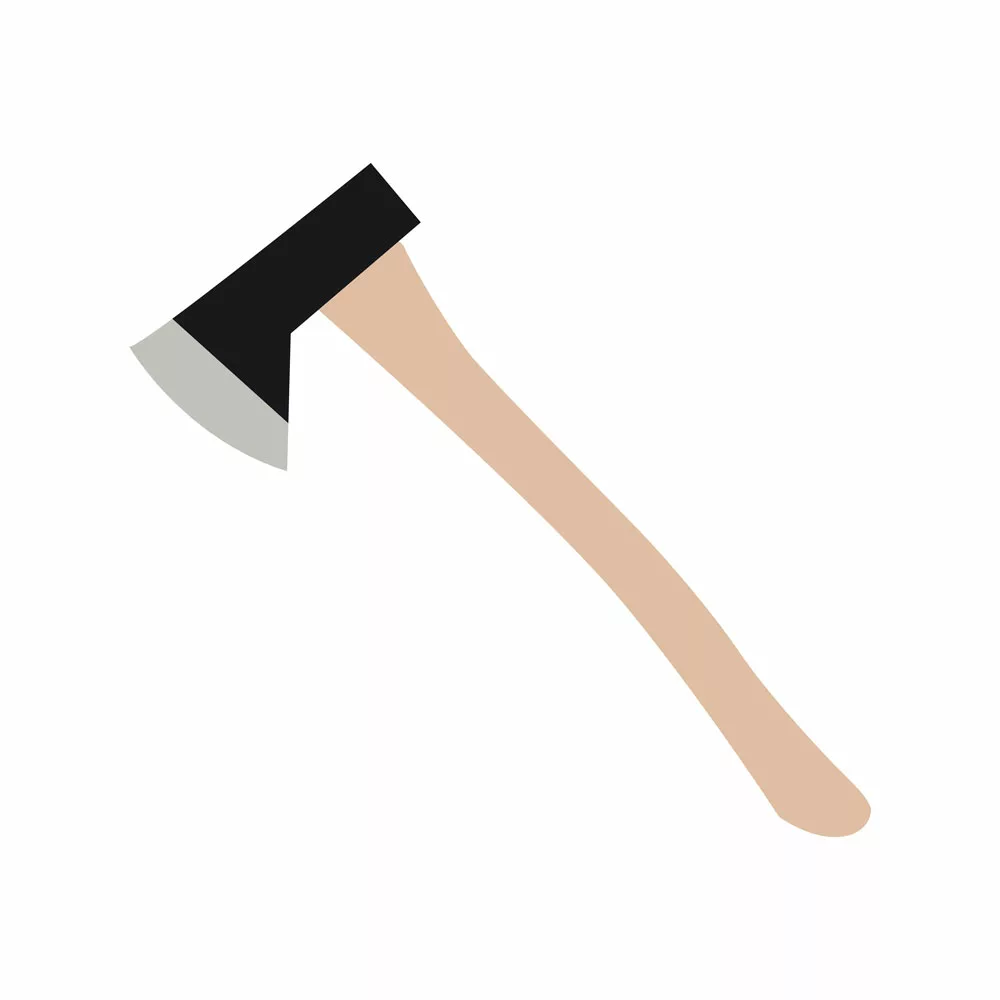
A Hudson Bay Axe Silhouette
It’s a woodworking axe, smaller than the average axe but larger than the hatchet. In the past, the axe was useful in the skin works by traders in the Hudson Bay area hence the name. Moreover, you can use the hand with a single hand or both, and it’s specifically useful for camping expeditions.
You can use the axe to clear vegetation, split small wood parts, and drive in wood pegs.
Hatchet

A Man uses a Hatchet with two hands.
This small-sized woodworking axe type is a must-have thanks to its versatility. Most industry-made hatchets are well-balanced and feature smooth handles with a studded grip area.
Hatchets weigh less than most large axes and are valuable for cutting down small logs into finer bits. Since the tool is versatile, consider carrying it on your camping expedition, as it can aid in other tasks like trimming trees and cutting shrubs.
Splitting Maul
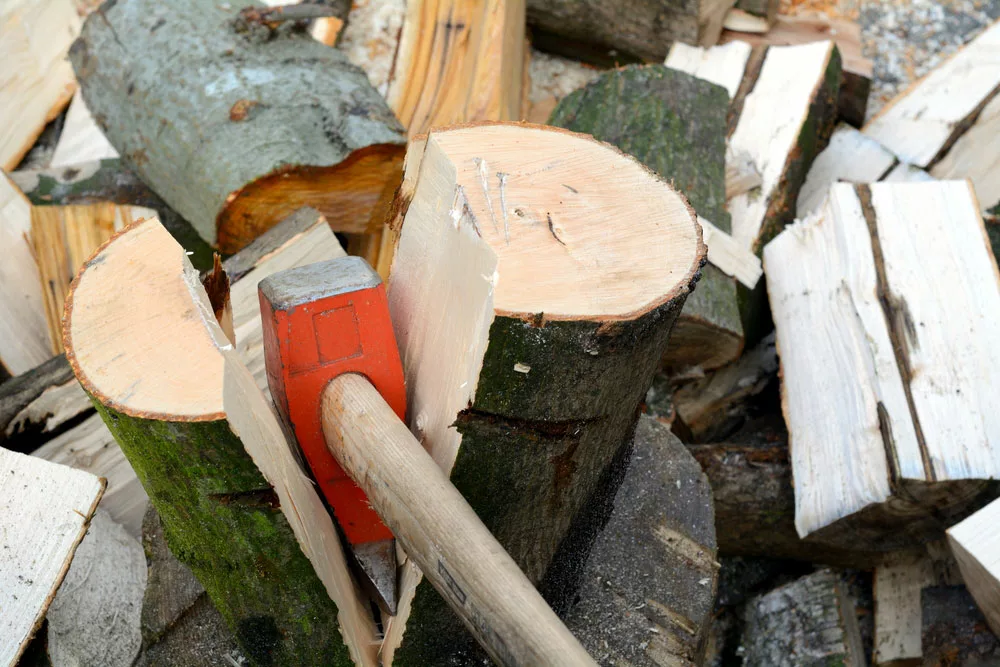
A Splitting Maul
You may confuse it for the felling axe, although the axe head for a splitting maul is less pronounced. Besides, it has a concave head which is primarily handy in delivering a robust force on logs during splitting.
Lastly, unlike the felling axe and forest axe, the splitting maul cuts logs along their grain.
Broad Axe

An Antique Broad Axe.
It’s another must-have axe for lumber industry workers. As its name suggests, the broadaxe is renowned for its wide flaring blade.
A broad axe is an essential tool for hewing applications. This is the process by which you remove the bark of a tree trunk for use in the lumber industry. Hence, in principle, a hewing axe is useful in tasks that a simple chisel cannot handle, primarily when dealing with large logs.
Double-Bit Axe

A Double Bit Axe
It’s a dual-purpose axe that is a handful accompaniment for every woodworker. The axe has two bits on either side of its head. It makes it a dual-purpose tool with more extensive applications than a single-bit axe.
It is also longer lasting than the single-bit type primarily because woodworkers use the bits alternately. You can use it for felling trees and limbing off the branches.
Mortising Axe
It’s the axe that a carpenter requires to craft tenon and mortise joints on wood. This operation is particularly significant in the furniture-making industry as it aids the joining of timber parts. Also, because it is a special-use axe, the tool has a long and thin head which is different from that of conventional axes.
Also noteworthy, while using this axe, remember its axe head size will determine your mortise size.
Tomahawk
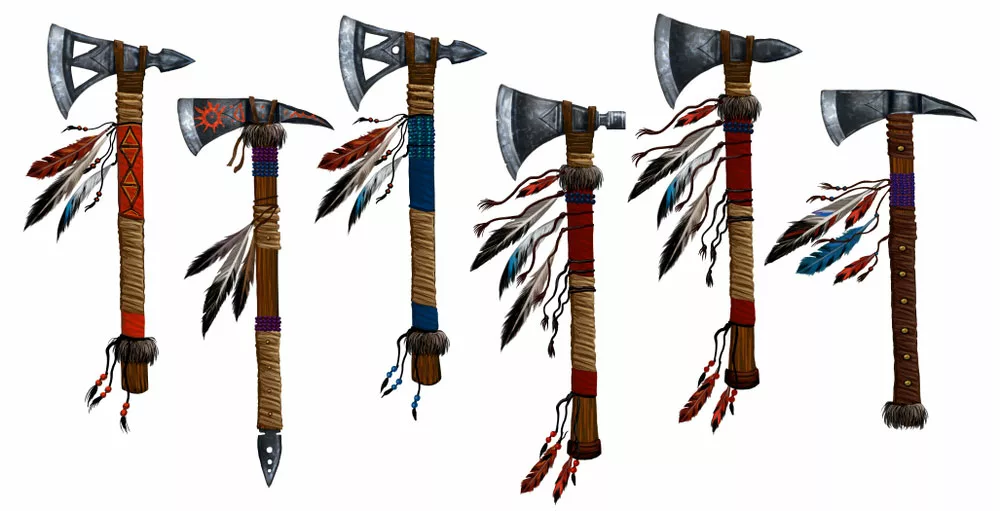
A Tomahawk.
This single-handed axe finds historical relevance to North American natives. It resembles the Viking’s axe synonymous with the European Nordic tribes. Primarily, the tomahawk was a war axe, although the present-day version of the axe is versatile.
This axe’s critical uses include cutting down small trees, cutting firewood to small bits, and clearing the bush. Thus, it can make a great camping tool.
Michigan Axe
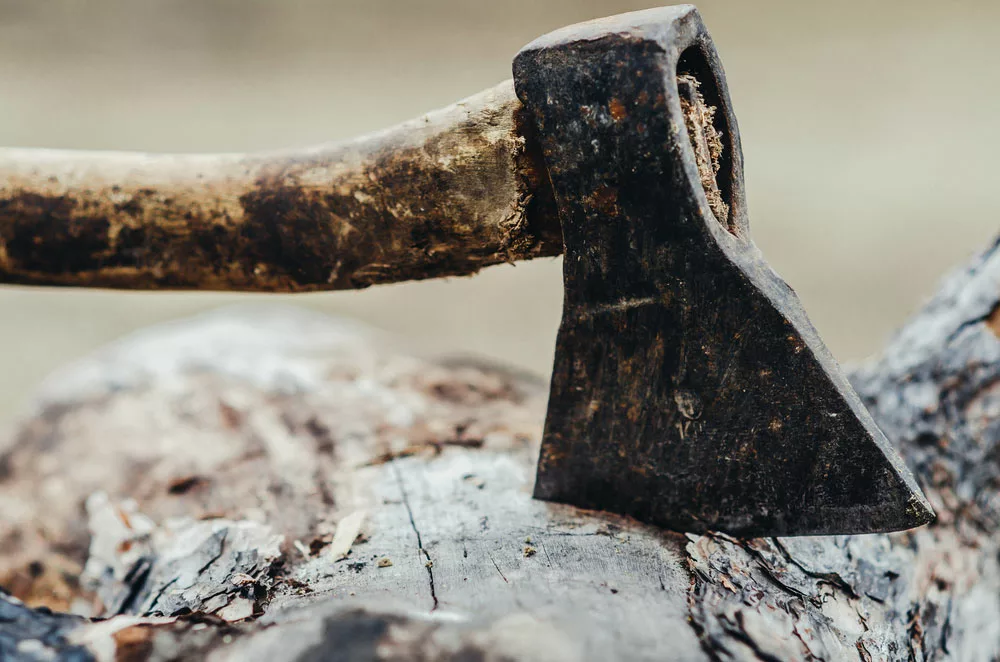
A Michigan Axe on a tree stump
It is a small feeling axe native to the Michigan area in the 1800s. It features fat cheeks and relatively wide bits to ensure it cuts deep into the wood during use. An average Michigan axe will weigh about 3 lbs. Most also sport a relatively long handle to use as a tree-felling tool.
The axe’s design also makes it ideal for cutting frozen tree logs without the risk of chipping.
Jersey Axe
It’s also similar to a Michigan Axe, but it has a unique lug feature that differentiates it from the others. Besides, the axe’s poll is blunt, and you can use it as a hammer. It is another key differentiating factor of the axe from the Michigan Axe.
The blunt poll on the tool further aids you in generating a deeper cut on the wood due to its heaviness and shape.
Swamper’s Axe
It is the ideal woodworking axe for limbing branches off the tree after felling it with a forest axe. The tool is small and has a short handle to facilitate use by one hand.
Swamper’s axe is also helpful in clearing marshes in swamps to set the ground for felling trees. Again, the tool has a wider bit than the average felling axe. Primarily, this ensures that it easily cuts off tree branches even when the wood is frozen.
Adze
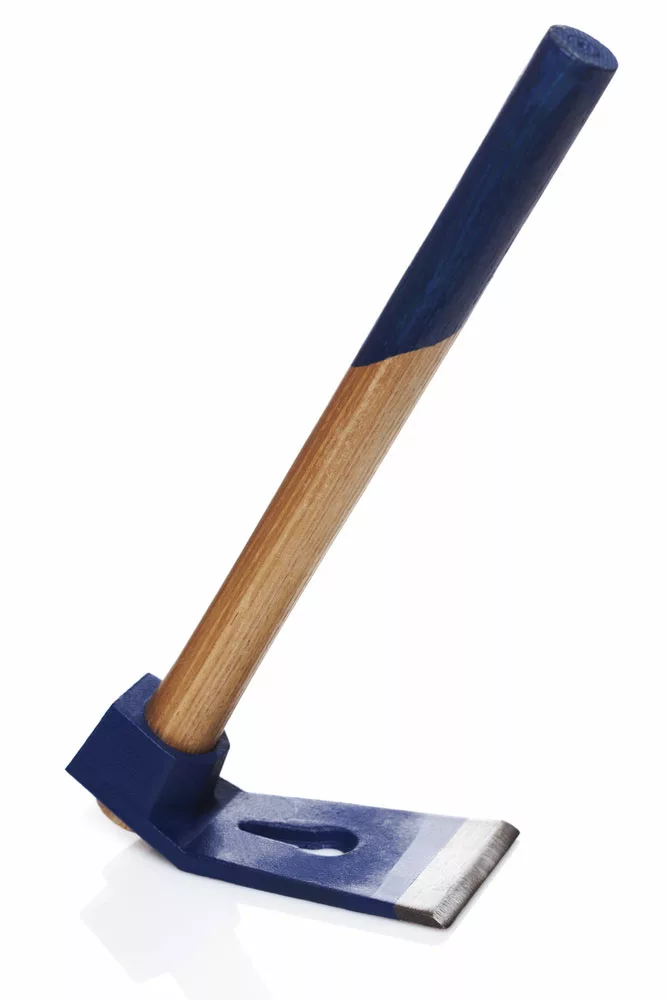
It combines the features of three main woodworking tools: a chisel, an axe, and a hammer. It is, therefore, a versatile tool in the lumber field. An adze is essential in gorging wood from logs, especially in manufacturing canoes.
They also feature a short handle; you need one hand to use most of them. However, foot adzes require you to apply both hands while using them.
Conclusion
As a woodworker, you need to pick the right tool for the task at hand. Hence, our guide aims to ensure you get the best service and efficiency. Contact us for more on the best woodworking axe types.
